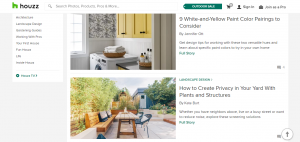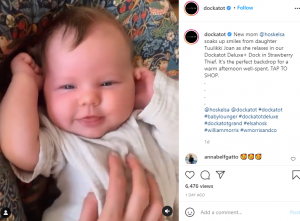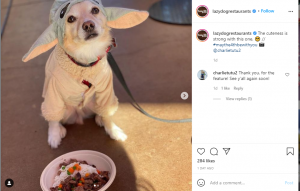Although 93% of customers say User Generated Content (UGC) influences their purchase decision, yet only a few businesses incorporate UGC in their marketing strategy. Businesses often overlook it because they find it way too complex or time consuming. However, understanding what is User Generated Content, and taking a quick look at how other brands have employed it successfully, will give you ideas about how your business can use it.
What is User Generated Content?
Any content that is created by a ‘user’ instead of the brand itself, is called user generated content. The user can be a customer, an employee, a social media follower or any community member. UGC comes in various forms. The most commonly used are the reviews and testimonials on your own website as well as on third-party sites.
Then come the blog and social media comments. Apart from these, there are videos and images created and shared by users on social media mentioning your brand or using your hashtag, etc.
Big brands like Coca Cola, Netflix, IBM, Adobe and many more have been leveraging UGC for quite some time now. However, this is not some fancy and costly strategy only reserved for the big names.
Quite on the contrary, user generated content is next to free. And making it a part of your marketing strategy can prove to be extremely fruitful for your business. You might wonder, but how do I get User Generated content?
Here’s the thing, it is not that hard to get. If you look closely, you might already have a large number of user generated content items like customer reviews and social media comments. All you need to do is encourage more of this and to integrate this content into your content marketing strategy. Furthermore, you can run contests, campaigns and give rewards to encourage users to generate content.
Why User Generated Content?
UGC provides the authenticity that company generated content lacks. It builds trust. Moreover, it is engaging and doesn’t cost much to the company. User generated content has maximum credibility and builds a strong community of followers and fans of your business. Furthermore, it humanizes your brand and makes it more relatable.
Types of UGC
User Generated Content (UGC) can come in many forms and here are the most common types:
Reviews and ratings:
The most widely used UGC has to be customer reviews and ratings. These include the text, audio, image as well as video reviews created by customers, which can be shared on your own website or your social media pages and on third-party review sites. Reviews and ratings are highly effective as 89% of customers won’t make a purchase without reading reviews.
Social media content:
Customers often share pictures and videos of a brand’s products or services on their social media handle. Other than that, customers and employees often mention a brand in their posts or comment on a business’s social media posts. If you integrate such content in your social media marketing strategy, your engagement rate will increase by 28%.
Forum discussions:
Forums like Reddit and Quora feature abundant authentic User Generated Content as customers ask and answer questions related to various businesses. You can use tools like Taggbox, etc. to collect useful UGC from these forums and integrate that into your website. Featuring UGC on your website can increase your web conversion by 29%.
Blogs:
When an individual mentions your brand, product or service in a blog post, it also counts as User Generated Content. For example, if you are a software provider, and someone mentioned your software in a how to Guide or in a Top 10 list, it can benefit your business. When someone else talks about your product without being paid, it increases the authenticity of their comments and thus influences people to consider your brand.
Video:
An unboxing video, a product review video or a how-to video created by a user without being paid by the company is UGC. User Generated Videos on YouTube receive 10 times more views than the videos created by the brands.
User Generated Content Examples
At this point you might be wondering how to utilize UGC in your marketing strategy? We thought the best idea would be to discuss how some businesses across different industries have successfully employed UGC in their marketing.
IBM
Businesses often think UGC is a B2C strategy and doesn’t apply to B2B. But B2B companies like IBM have proven this notion wrong. IBM actively collects and utilizes UGC in its marketing.
It asks its customers and employees to talk about their experiences with IBM. IBM collects real client stories and features it on its website. It also encourages its clients to leave their reviews on third-party sites like Trustradius and others.
Apart from this, IBM uses UGC in its social media strategy. Content created by its customers and employees with the #IBM is often shared by the company. IBMers are encouraged to share their experiences on social media like Instagram to show the world how life inside IBM looks like.

Benefits of UGC to IBM
The testimonials and reviews lend credibility to the brand. Reviews on TrustRadius provide details very useful to any potential customer.
UGC posts on social media get them better engagement. For example, the below picture of an employee shared by IBM has received 3,743 likes. Similarly, #IBM has a whopping 403,862 posts.
The hashtag helps IBM to monitor UGC and see who’s engaging with the company. Moreover, it humanizes what could otherwise come across as a big, soulless corporation. This makes the company more approachable to potential customers from small and medium businesses as well.
Houzz
Houzz is an online platform for home remodeling and redesigning. It helps homeowners to get the best redesigning ideas and products and to hire the right professionals to remodel homes. They can connect with other homeowners and professionals like architects, designers, painters, builders as well as home product sellers.
Houzz encourages creating UGC on its website – the Houzz Ideabook is the page where home improvement professionals like designers, architects and home product sellers can share their work, ideas, guides and tips.
End customers are invited to share their project ideas and feedback. To further increase engagement, users are asked to vote on these designs.

Benefits to Houzz
This has created tons of stories in the Ideabook – 25880 stories – which helped Houzz’s B2B customers (home improvement professionals and home product sellers), to sell their services.
The Ideabook also helped Houzz to engage its customer base of homeowners to visit the site more often. Since the stories are created by the users and not the brand, customers perceive them to be more authentic and trust-worthy.
All of this helps Houzz earn more revenue from its B2B customers while creating a sea of authentic resources for its brand.
DockATot
From an unknown brand to one of the most loved infant bedding company, DockATot won the battle with user generated content.
DockATot, a European infant bedding company, faced the challenge of getting new customers when it arrived in the US.
The challenge was to earn the trust of its customers as well as to establish its products as worthy of the high prices. The company employed a UGC strategy – it requested its customers to rate their product on a photo review app and shared photos on social media.
The photos and videos shared by Moms on social media were then shared by the brand on their own social media handle. Not just that, the company also uses UGC for their social media advertising strategy. They use the content shared by real customers to promote their products.

Benefits to DockATot
Asking for reviews on third-party sites helped the company build UGC and earn the trust of its customers. Using branded hashtags and sharing UGC on social media, particularly on Instagram spread the word and increased user engagement.
Using customer photos and videos in advertising lent authenticity to its products. All of this helped the company increase its sales by 2000% in just 3 years of its launch in the US.
Lazy Dog Restaurant
A California based restaurant and bar uses branded hashtags like #ldtable | #ldbeerclub and others on their Instagram Profile and encourages customers to post pictures and videos with these hashtags. The restaurant then features this content on their profile while crediting the creator.

Benefits to Lazy Dog Restaurants
This hashtag campaign has inspired more and more customers to share their photos and videos. For instance, #Idtable alone has 2,137 posts. And the Instagram page of the restaurant has 53k followers.
This campaign has helped the restaurant engage with its customers which in turn leads to customer retention. Seeing customers of the restaurant post these pictures and videos, other people are also inspired to try out the restaurant. This results in more customers for the brand.
Bottom Line
User Generated Content is very powerful because it brings your brand’s promise into perspective in the words of your customers.
There are many ways of integrating UGC into your content marketing strategy. We hope the examples above have thrown some light on how different industries are using them to engage with customers and increase sales
However, encouraging users to generate content, collecting it, monitoring it and then repurposing it, is a lot of work, especially for small companies. If you lack resources inhouse, consider outsourcing this task to an expert with the right skills and tools.
